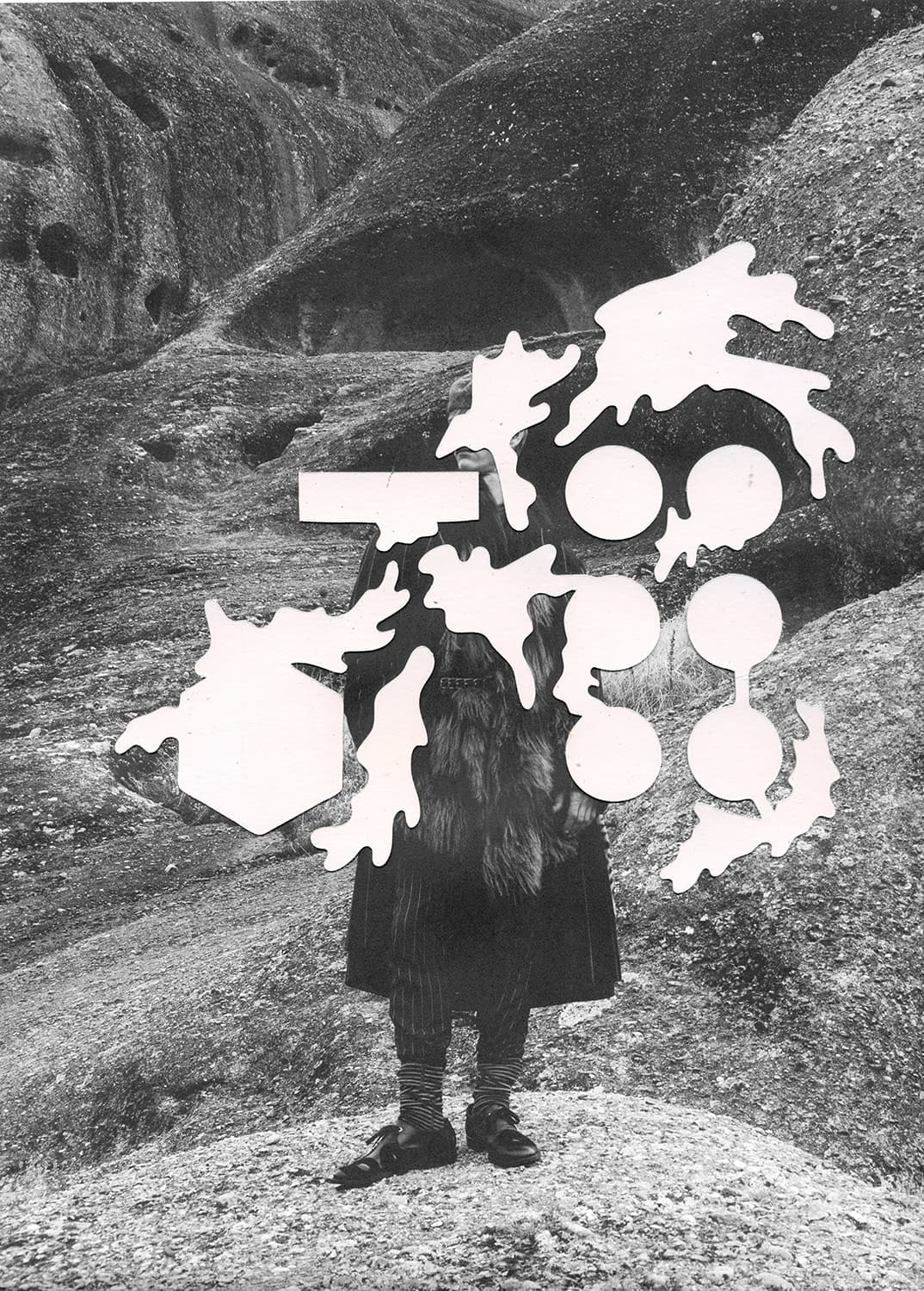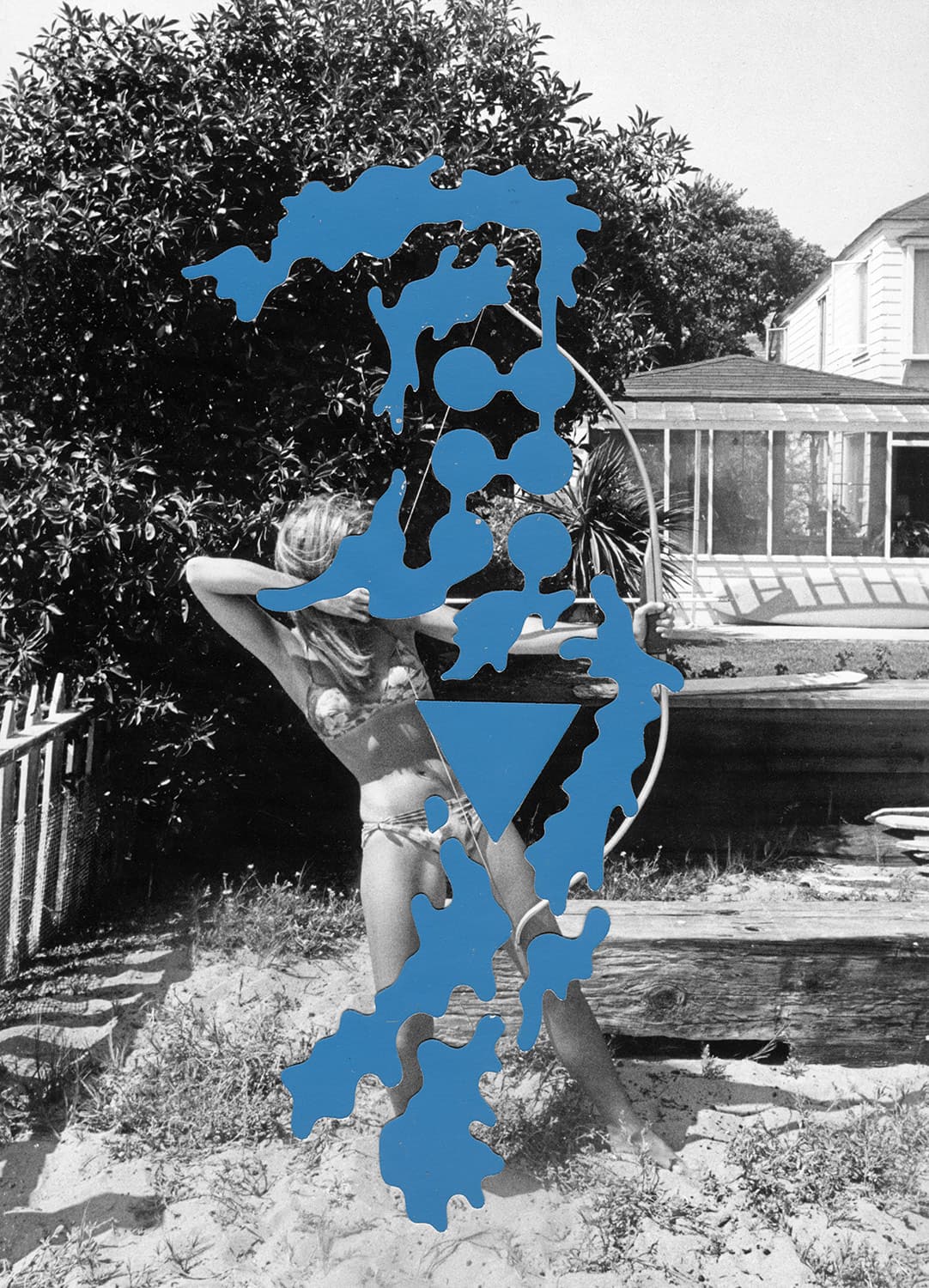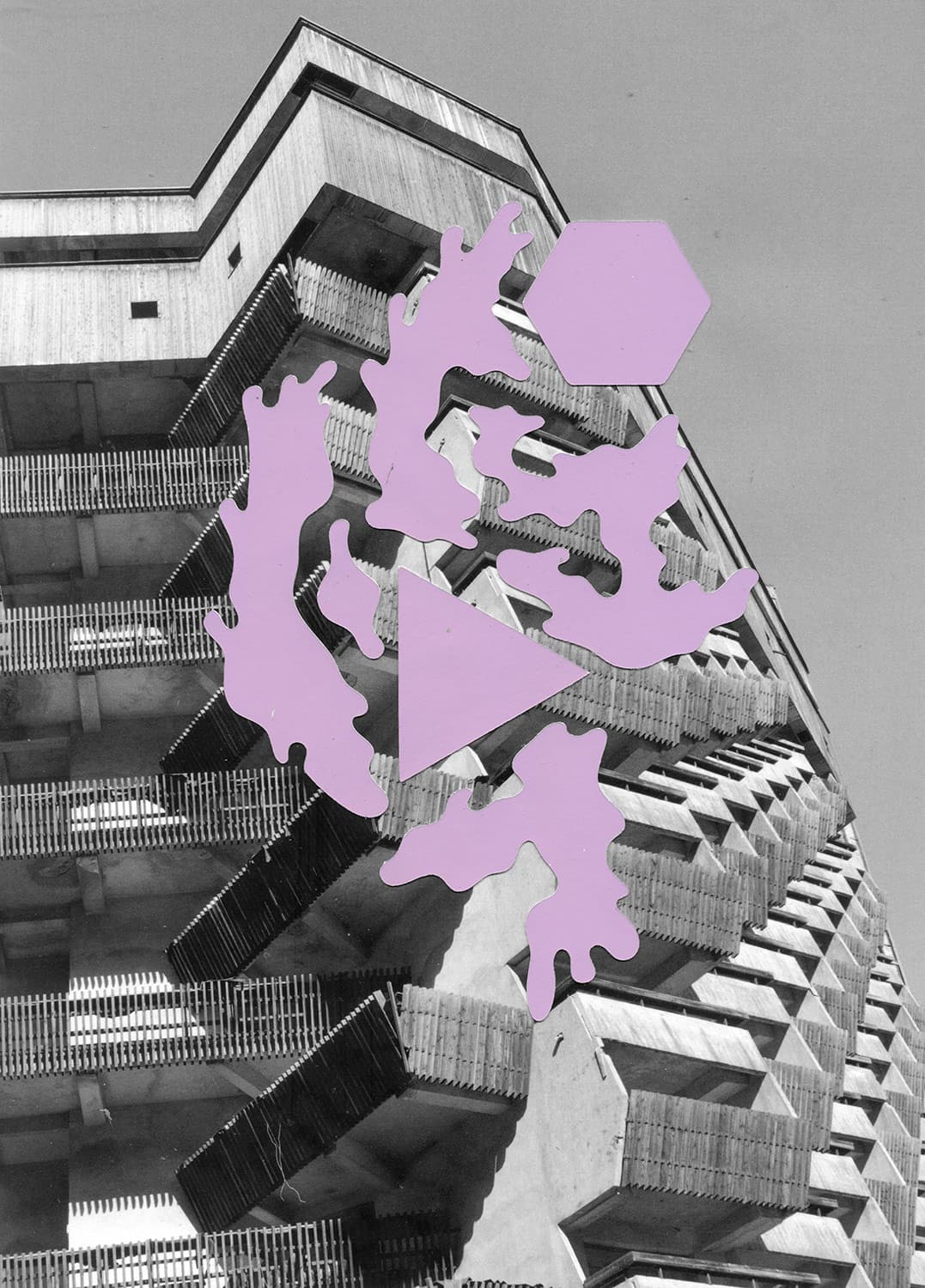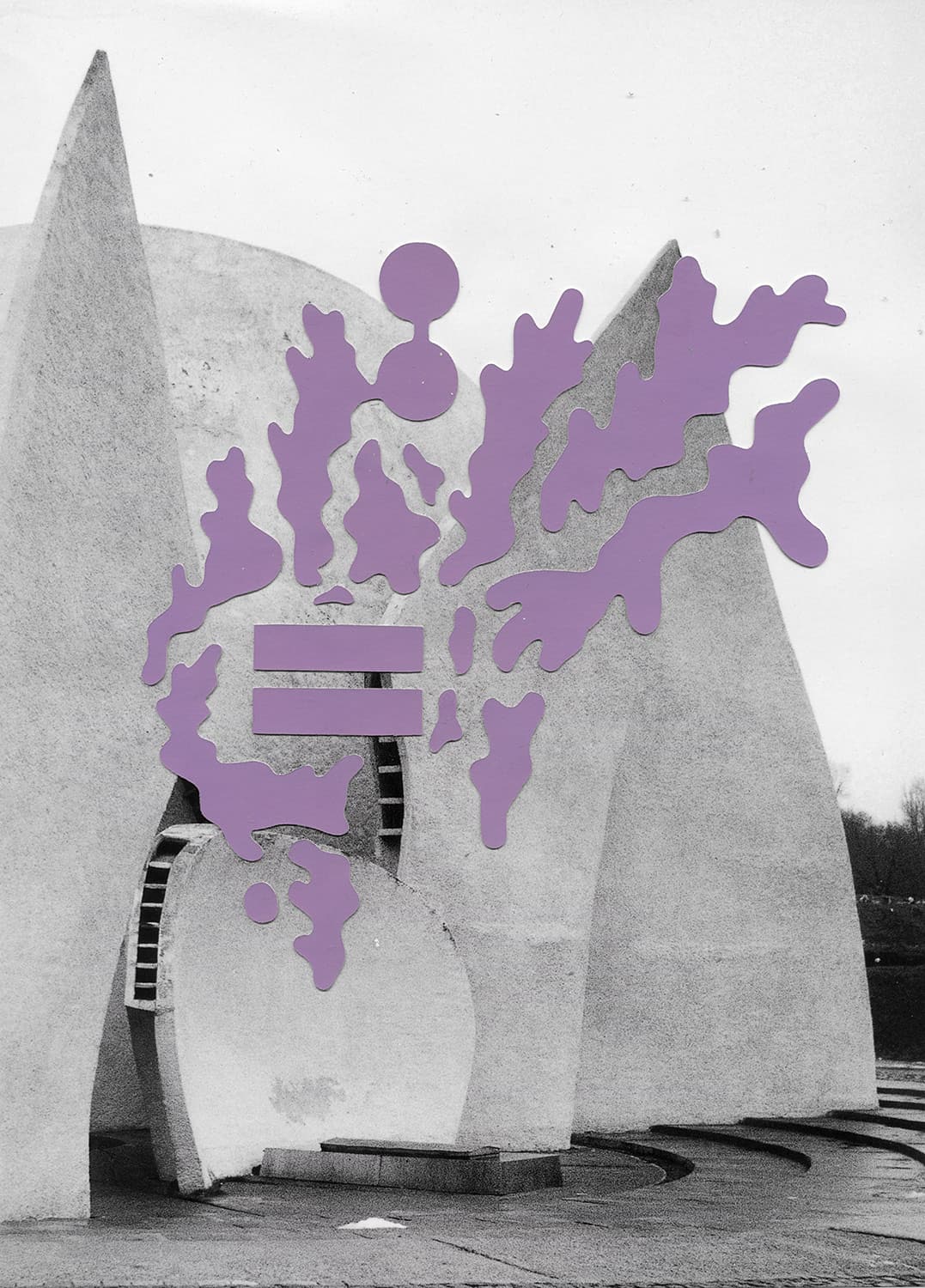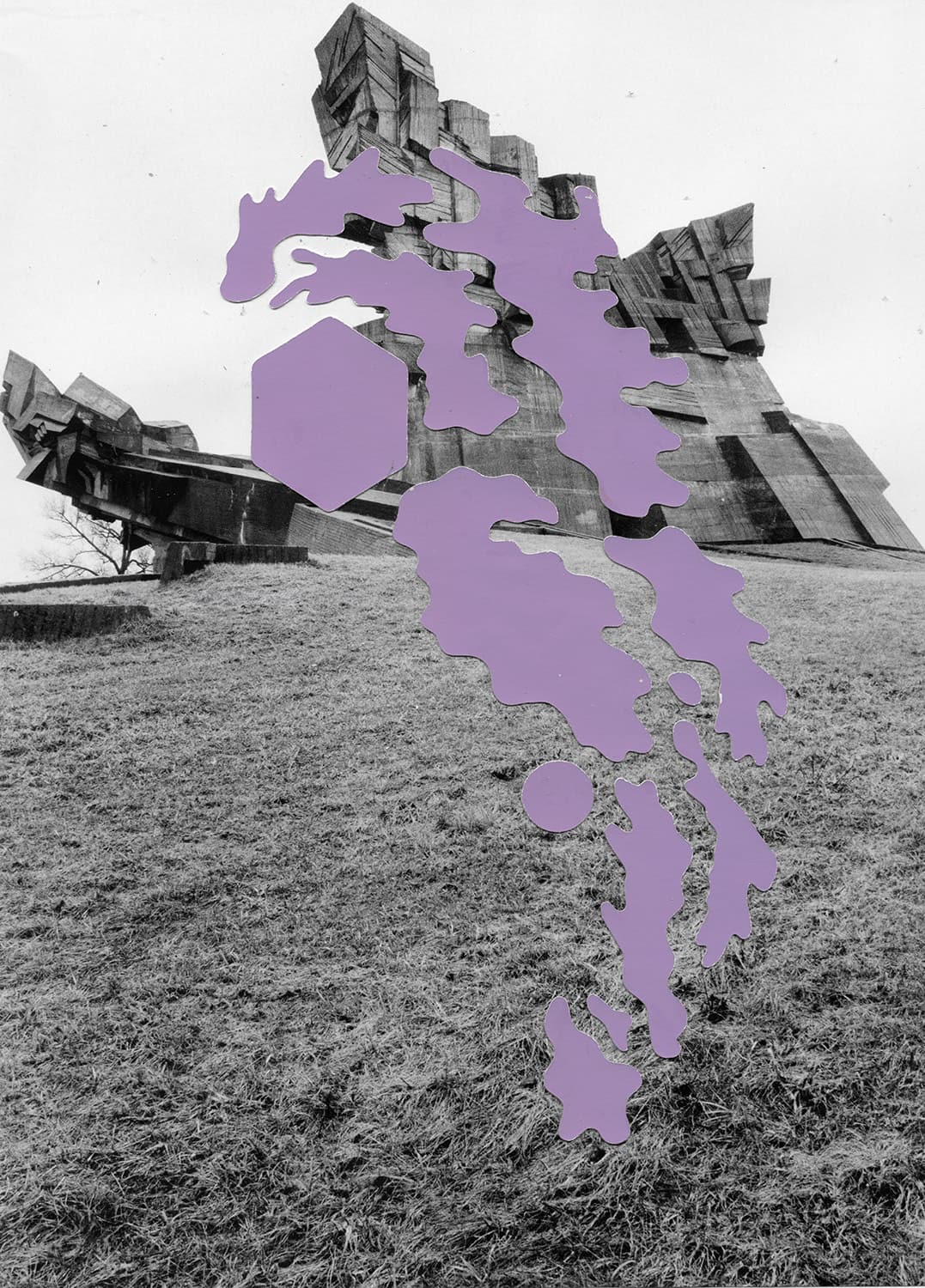
The infinite love project
The infinite love project
Love. We use the four letter word every single day. But I’m not sure we all really know what exactly we’re talking about. Love? We love music, animals, burgers, places, people. We love a song the first second we listen to it, and it stays with us forever. Love is a strange word. We love our couple. We love a dear friend. A restaurant. We love our grandma. We love a job, New York, Skateboarding,Robert Rauschenberg or Fondue. Some love God. Others, mother earth. We certainly love to be loved. But, what love really is? And, even more important, what love means to me? The infinite love is project commissioned by NEW in June 2020 and developed between July 2020 and December 2020. The series is made up of 33 paper collages.




Thinking about The infinite love series.
Text by Emily Gosling
To create a collage is to create a dialogue between the images that form it. The ways in which they’re slashed, modified, distorted, transmogrified and reconfigured generates conversations between each of its constituents; and more broadly, conversations with the tradition of the medium itself. A good collage interrogates the very meaning of “collage.”
It could be suggested that contemporary collage is a strange sort of limbo at the moment—a liminal space somewhere between its numerous iterations: the “high art” of its Cubist originators Georges Braque and Pablo Picasso; the conceptual standpoints of Rauschenberg; the playful evolution of the medium catalysed and toyed with by the Dadaists; the viscerally snarling rip-it-up-and-start-again punk attitude of the 70s; the newness and potentiality of ever-evolving digital tools.
The medium is an often-unfairly maligned one—perhaps because it’s instantly visually appealing, or maybe because many still recall its use as a childhood rainy day distraction. Its perceived democracy can be said to be its Achilles heel in being taken seriously by some facets of the “Art World.”
By its simplest definition, collage is an assemblage of different components compiled as a single image to form a new whole. As such, in spite of its detractors, the medium is a powerful tool of destabilisation. Collage subverts many things—meaning, the distinction between “high” and “low” art, its innate source materials. It sabotages history to create newness. Directly interrupting meaning in order to challenge inherited discourses and depictions, collage constructs proposals for alternative realities through re-appropriating and rewriting the past.
While there may seem to be a dominant collage “aesthetic”, those pushing the form in contemporary contexts are using it just as any artist might seek to mobilise any other medium: progressing its possibilities and forging new modes of expression.
After all, collage isn’t just a style, but a medium.
This notion of catechising mode and meaning is at the very heart of the practice of Barcelona-based, Buenos-Aires born artist Máximo Tuja, who works under the moniker Max-o-matic. His work continually strives to cut to the quick of what collage is, and ways in which we can disrupt its aesthetic. Taking this to its extreme, he often looks to conceal the fact his pieces are collages at all.
Complexity
For the past six or so years, Tuja’s work has dealt with the notion of complexity; interrogating the ways in which information is consumed in an image-saturated modern world, and how that information is processed in order to construct meaning. His work exemplifies the facet of collage as a means of communicating by obfuscating: conflating reference points in order to make sense of a world in which we collectively skim, copy, paste, and reformat ideas from a terrifyingly vast digital landscape of images and messages.
The shapes Tuja creates as the abstract foils to his photographic source materials have a somewhat Surrealist-leaning approach in terms of their formation. He describes them as an “unconscious dialogue with myself”, and they’re the product of doodling of sorts, the type of images made when the brain is elsewhere. When viewed with the benefit of hindsight, they also reflect Tuja’s moods back to him, he says: images created in more tense, nervous moments tend to be denser and spikier, for instance.
In Tuja’s collages, representative and figurative found imagery becomes abstracted through its marriage with pure colour and shape. This abstraction is one avenue through which the work looks to open up a dialogue with the viewer. Another method is through the psychedelic-leaning nature of the ultra-detailed cut patterns formed within the images’ coloured elements. These are designed to encourage the viewer to really focus on the picture.
’Pataphysics and Process
The key tenet underpinning Tuja’s work is the use of a defined set of rules and limitations that serve as unseen structures throughout his various series. Rules might be around the number of pieces of paper that are used to create each piece, or more esoteric starting points—previous works have examined the politics of gender and gender stereotypes, for instance, but in ways that are more obfuscated than overt.
Tuja’s centrality of rules and structures are posited as a part of his art that’s as vital as their aesthetic conclusions. These ongoing investigations around process are broadly inspired by certain literary movements. While his work doesn’t directly draw on ’Pataphysics (the apostrophe here is deliberate), Tuja has a longstanding fascination with this loosely philosophical movement that parodies the theory and methods of modern science with a faux-serious detachment and a palpable playfulness. The word ’Pataphysics was coined by the French writer Alfred Jarry, who defined it as the “science of imaginary solutions”, though the movement flourished a while later in mid-20th century Paris through a collective of avant-garde writers. It’s a tricky thing to explain, but was neartly summed up by The Guardian as “an esoteric philosophy that defies rational belief”; “an escape from reality—reminding us of just how idiotic the rules that dog our everyday existence are” and an “international quasi-science” with today’s mostly-artist adherents engaging in regular activities that can “only be described as outrageously pretentious.”
While Tuja makes the distinction that ’Pataphysics proponents were “more interested in not making sense than I am,” he states that the movement is “somehow present in everything I do.” Indeed, his Max-o-matic monker was drawn from a renowned Argentinean ’Pataphysic Juan Esteban Fassio’s Hopscotch-o-matic, a machine created in the 1960s that was designed to read Julio Cortazar’s novel Hopscotch in infinite different ways.
However, Oulipo (loosely translated as “workshop of potential literature”)—a subcommittee of the Collège de ’Pataphysique formed in 1960—directly informs Tuja’s artistic practise. Oulipo figures including novelists Georges Perec and Raymond Queneau created artworks guided by the idea of building structures rather than following traditional modes of meaning-making. Perec, for instance, placed limitations and the notion of linking at the heart of his work. One of his most famous works was an example of the litogram: his novel La disparition (“a void”) was written entirely without using the letter “e”—no mean feat when writing in his native French.
“I like to think of limitations as ways of creating a structure. I’m attracted to the idea of finding formulas to create art,” says Tuja. “I like working with things that aren’t obvious and can’t be seen at first glance.”
Writer Raymond Roussel, whose mostly early 20th-century work directly informed that of Oulipo and Surrealist artists, has also been a key touchstone. Roussel’s writings were frequently forged though puns, word games and deliberate linguistic distortions that led to entirely new ideas. These modes were detailed in How I Wrote Certain of My Books, an autobiographical essay penned not long before Roussel died of a suspected suicide, and sent to his publisher under strict instructions not to publish it until after his death.
One key practice saw Roussel follow words’ sounds rather than their meanings in order to access otherwise unfathomable paths and narrative non-sequiturs. “What appeared to be the most amazing imagination was actually almost mathematical,” says Tuja. Everything is so rich in imagination and unthinkable images, and they were all pre-designed by a set of rules he created. So I started to play around with how art is created.”
Love
Tuja’s new commission, a series of 33 paper collages based on the concept of Love, was created as three miniseries of 11 pieces. The works can be combined in different ways to create infinite readings of the artworks thanks to the innumerable possible combinations of images and how they’re read. In this way, the meaning of the works is created more by the viewers’ interpretations than the artists’ explicit intentions.
For the Love series, the artist set himself three simple rules, one for each of the three sets of images. Each series uses a different colour of paper for its cutouts—blue, pink and purple. All of the 33 images were created using just two pieces of paper: one image, one piece of coloured paper.
The three series each use a different book as the source material for the background. These were deliberately selected to contrast one another as a mode of differentiation between the three: they include strange Soviet architecture, more classical looking imagery shot by Dennis Hopper in the 1960s and a book depicting androgynous contemporary fashion. The peculiar nature of the architecture within the USSR photography book is no accident: “I wanted the buildings to not look recognisable, so that the viewers weren’t really able to relate to them,” says Tuja. “I wanted the viewers to just try and imagine what happened in those weird places.”
Aside from portraying three very different aesthetics, the books Tuja selected also demonstrate his wider belief in collage’s capacity to blur the boundaries between art and life. The books he was slashing into were ones he loved—an apt reflection of the series’ theme. He has described their use as a “sacrifice”. That “feeling of “loss” he speaks of ties in with his love of “transmutation through collage.” For the artist, the idea of love as portrayed in these works is “not esoteric or spiritual at all. It’s almost physical.”
Meanwhile, the coloured paper used to form the abstract shapes was far from random: a friend of the artist gave him paint samples in colours he would have been unlikely to use through his own volition. “These papers are part of my daily life,” says Tuja. “What they represent then became part of the pieces I made from them.”
The idea of creating the three miniseries within the overarching Love project was more than a simple organising principle—they also open up another means of creating multifarious narratives and interpretations through the way they’re displayed. Tuja’s guidelines for displaying the works state that images should be exhibited in random groups of three collages, formed by two images from the Pink and Blue series and one from the Purple series. In this way, “each triad will create a love story,” he says. The viewer, once again, becomes complicit in the formation of the works’ meaning.
Each of the pieces in the Love series can be modified by peeling off the coloured shapes and reapplying them to other source images. This raises a number of questions that are both specific to the works and which also address broader queries about art and authorship. Will the piece’s owner dare to rework them, and risk “destroying” them? How does that impact the perceived value of each piece? And the value of any new pieces created from shapes initially cut by the artist? Who, then, is the creator?
Sculpting control from chaos
For Tuja, rules and limitations encourage boundary-pushing by the very creation of those boundaries. They’re one of his ways of “taming chaos”, an intrinsic thread running through his more psychedelic-leaning twist on the “less is more” maxim. Starting a collage from the seemingly stark point of just two sources makes for a refreshing boldness when it comes to stretching those sources to their ultimate capacity and complexity. “What I try to do with the rules is find ways to make the limitations spark my creativity,” says Tuja. “Limits make me find new ways of doing things I’ve done hundreds of times before.”
Wrenching of order from chaos is, at its very nature, what collage is all about. Today, more than ever, the world and how we experience it can be reduced to a rapid surge of fragments of images. We instinctively mentally organise those in order to make sense of our own experiences without thinking. The collage artist makes that process physical, manifests it on paper.
Tuja’s own process takes that notion of organising images and fragments of images and colours and shapes and reduces it to its most basic components. Modern life is a commotion of information and visual noise, and the artist describes his process as in part being about “bringing order. It puts me in control of finding balance.” In a way, collage is a means by which the artist can edit life—its moments, ideas, pop cultural reference points, visual ephemera, flotsam and jetsam. Love, here, is not presented as a “series of proclamations,” says Tuja, but “a series of questions.”
“It’s way more interesting knowing what people can read in my artworks than explaining what I had tried to communicate,” says Tuja. “I can’t control the message I’m sending: it will always be completed and adapted by the one who’s on the other side.”
The beauty of collage is that it carries fertile ground for multiple interpretations–political, flippant, or simply aesthetically pleasing–yet it’s inherently playful, too, and in the right hands, underpinned by conceptual thought. In Tuja’s work, the viewer is always positioned as a fundamental component to the work. They’re not a detached spectator, but a co-creator of meaning and even of aesthetic, should they wish to be.
Social Max-o-matic:
instagram – linkedin
Commissions, nice mails and flattering words:
info (at) maxomatic.net
-
